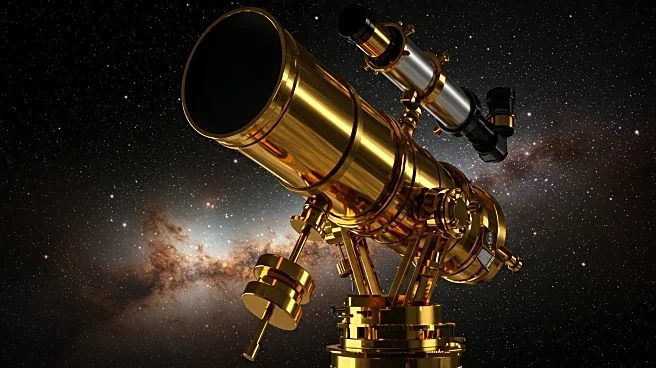What's Happening?
The James Webb Space Telescope (JWST) has potentially discovered a new exoplanet orbiting Alpha Centauri A, located just four light-years from Earth. This candidate exoplanet, a gas giant, is situated within the habitable zone of its host star, although it is unlikely to support life. The discovery highlights the advanced capabilities of the JWST, which used its Mid-Infrared Instrument (MIRI) and a coronagraphic mask to reduce glare and detect the faint object. The exoplanet is approximately 10,000 times fainter than Alpha Centauri A, showcasing the telescope's ability to observe celestial bodies previously obscured or too faint for detection.
Why It's Important?
The potential discovery of an exoplanet in the Alpha Centauri system offers a unique opportunity to study planetary formation and evolution in a system similar to our own. This finding could reshape our understanding of how planets form and exist within habitable zones, even when they are gas giants. The proximity of the exoplanet to a sun-like star makes it a compelling subject for further research, potentially providing valuable insights into the dynamics of planetary systems and their formation processes.
What's Next?
Confirmation of the exoplanet's existence remains challenging, as subsequent observations have not yet corroborated the initial findings. Future telescopes, such as the Nancy Grace Roman Space Telescope, scheduled for launch in 2027, may provide the necessary data to confirm the planet. The ongoing pursuit of this discovery underscores the dynamic nature of astronomical research, where new technology continually pushes the boundaries of observation and understanding.
Beyond the Headlines
The discovery has captured the imagination of both scientists and science fiction enthusiasts, evoking parallels to fictional worlds and sparking curiosity about the possibilities of life and exploration in the universe. This intersection of science and fiction continues to inspire new generations to ponder the mysteries of space.
















